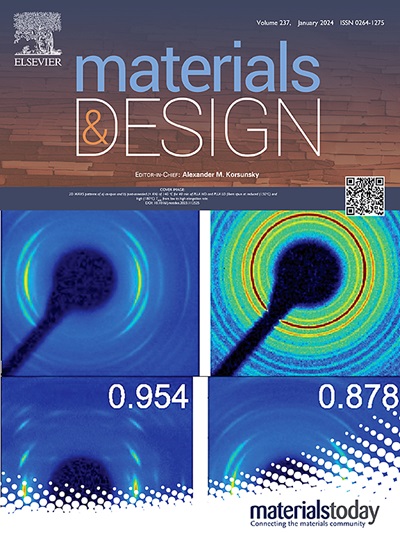Capturing thin-film microstructure contributions during ultrafast laser-metal interactions using atomistic simulations
IF 7.9
2区 材料科学
Q1 MATERIALS SCIENCE, MULTIDISCIPLINARY
引用次数: 0
Abstract
Progress in the emerging fields of atomic and close-to-atomic scale manufacturing is underpinned by enhanced precision and optimization of laser-controlled nanostructuring. Understanding thin films' crystallographic orientations and microstructure effects becomes crucial for optimizing the laser-metallic thin film interactions; however, these effects remain largely unexplored at the atomic scale. Using a hybrid two-temperature model and molecular dynamics, we simulated ultrafast laser-metal interactions for gold thin films with varying crystallographic orientations and microstructure configurations. Microstructure features, namely grain size, grain topology, and local crystallographic orientation, controlled the rate and extent of lattice disorder evolution and phase transformation, particularly at lower applied fluences. Our simulations provided comprehensive insights encompassing both the nanomechanical and thermodynamic aspects of ultrafast laser-metal interactions at atomic resolution. Microstructure-aware/informed thin film fabrication and targeted defect engineering could improve the precision of nanoscale laser processing and potentially emerge as an energy-efficient optimization strategy.

利用原子模拟捕捉超快激光与金属相互作用过程中薄膜微观结构的贡献
在原子和近原子尺度制造的新兴领域的进步是由激光控制的纳米结构的精度提高和优化的基础。了解薄膜的晶体取向和微观结构效应对优化激光-金属薄膜相互作用至关重要;然而,这些效应在原子尺度上仍未被探索。利用混合双温模型和分子动力学,我们模拟了具有不同晶体取向和微观结构配置的金薄膜的超快激光-金属相互作用。微观结构特征,即晶粒尺寸、晶粒拓扑结构和局部晶体取向,控制着晶格无序演化和相变的速度和程度,特别是在较低的施加影响下。我们的模拟提供了全面的见解,包括原子分辨率下超快激光-金属相互作用的纳米力学和热力学方面。微结构感知/信息薄膜制造和定向缺陷工程可以提高纳米级激光加工的精度,并有可能成为一种节能优化策略。
本文章由计算机程序翻译,如有差异,请以英文原文为准。
求助全文
约1分钟内获得全文
求助全文
来源期刊

Materials & Design
Engineering-Mechanical Engineering
CiteScore
14.30
自引率
7.10%
发文量
1028
审稿时长
85 days
期刊介绍:
Materials and Design is a multi-disciplinary journal that publishes original research reports, review articles, and express communications. The journal focuses on studying the structure and properties of inorganic and organic materials, advancements in synthesis, processing, characterization, and testing, the design of materials and engineering systems, and their applications in technology. It aims to bring together various aspects of materials science, engineering, physics, and chemistry.
The journal explores themes ranging from materials to design and aims to reveal the connections between natural and artificial materials, as well as experiment and modeling. Manuscripts submitted to Materials and Design should contain elements of discovery and surprise, as they often contribute new insights into the architecture and function of matter.
 求助内容:
求助内容: 应助结果提醒方式:
应助结果提醒方式:


